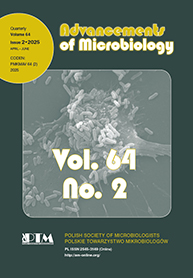Abstract: Oral cancer, predominantly oral squamous cell carcinoma (OSCC), is a multifactorial disease influenced by genetic, environmental, and microbial factors. Among the emerging contributors to oral carcinogenesis, Fusobacterium nucleatum and Porphyromonas gingivalis, two Gram-negative anaerobic bacteria that reside in the human oral cavity as part of the normal microbiota, have gained attention for their pathogenic roles. Both species play key roles in periodontal disease and exhibit significant tumour-promoting activities through distinct and synergistic mechanisms. They modulate the tumor microenvironment by promoting the release of pro-inflammatory cytokines, facilitating immune evasion, and contributing to microbial dysbiosis. Clinical studies have identified their presence in OSCC tissues, correlating with advanced tumor stages, lymph node metastasis, and poor prognosis. Their involvement underscores the critical interplay between oral microbiota and host-pathogen interactions in cancer development. This review highlights the molecular mechanisms through which F. nucleatum and P. gingivalis contribute to oral carcinogenesis, emphasizing the need for further research to explore their diagnostic and therapeutic potential in oral cancer management. Addressing these microbial drivers could pave the way for innovative strategies in cancer prevention and treatment.
Browsing tag: Porphyromonas gingivalis
Abstract: Periodontitis (PD) is a chronic inflammatory disease that affects a significant portion of the global population. In susceptible individuals, the disease is driven by dysbiotic microbiota on the tooth surface below the gum line, progressively eroding the tooth-supporting structures of the periodontium, including the alveolar bone. Clinically, PD manifests as attachment loss and periodontal pocket formation. Influenced by environmental factors, it can ultimately lead to tooth loss and is associated with an increased risk of systemic conditions. Host cells, including oral keratinocytes, gingival fibroblasts, and monocytes/macrophages, regulate the immune response that drives chronic inflammation and tissue damage in PD. Programmed cell death pathways – apoptosis, pyroptosis, and necroptosis – are key regulators of the immune response. These pathways orchestrate the elimination of infected, activated, and/or damaged cells, which is essential for either fuelling or resolving local inflammation. However, periodontal pathogens, particularly Porphyromonas gingivalis, can manipulate these pathways, supporting the maintenance of highly inflammatory environment. Prolonged exposition to proinflammatory agents may induce cellular senescence. This process contributes to chronic inflammation and tissue breakdown, further exacerbating the progression of PD. In this review, we discuss the key factors contributing to the onset and progression of PD, the virulence factors of P. gingivalis, and their effects on immune responses and cell death in keratinocytes, gingival fibroblasts, and macrophages.

